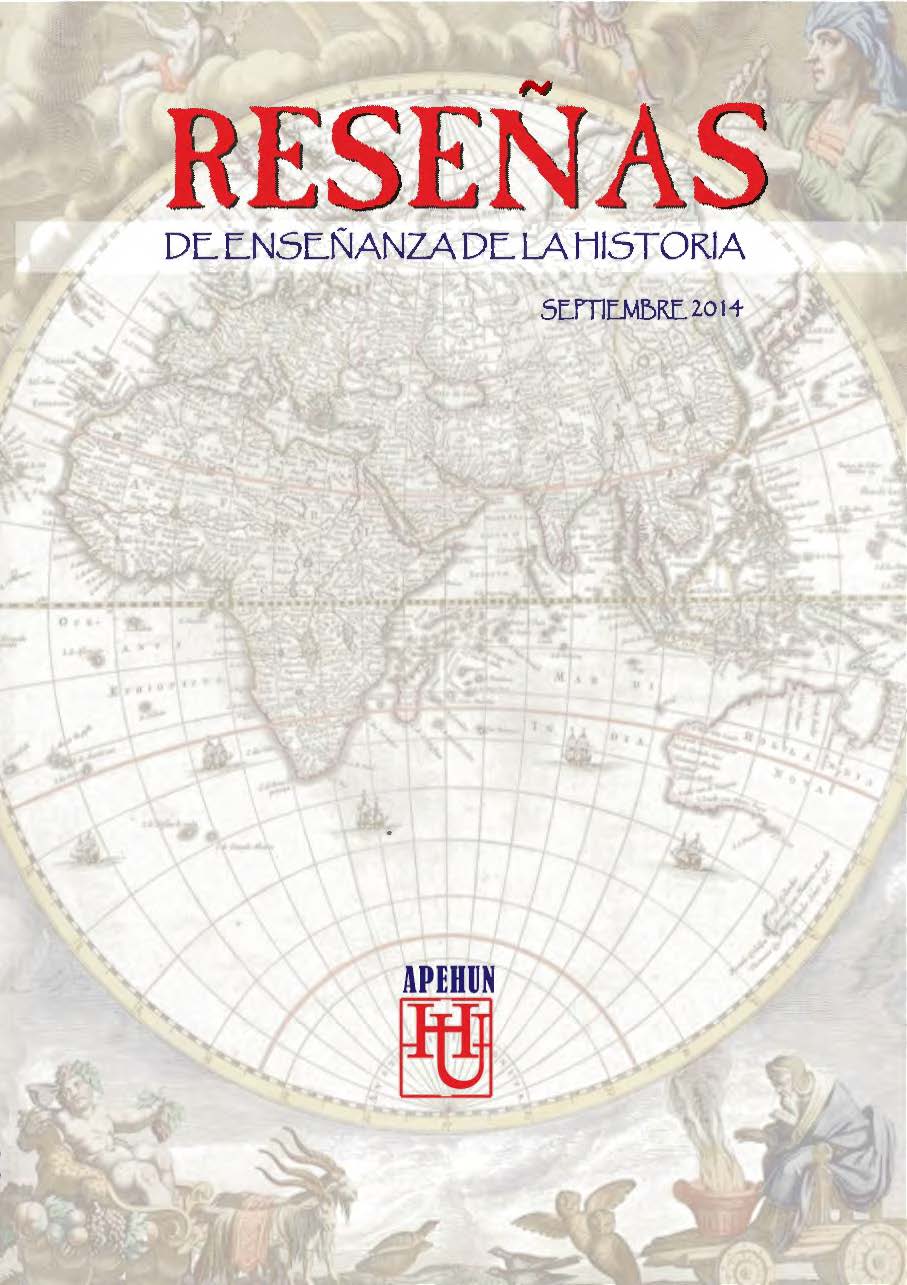Pensando en el manual de historia Entre escrituras, prácticas y lecturas
Main Article Content
Abstract
This article is intended to propose a set of analysis tools for a proper reading of history textbooks by means of gathering different issues of the matter. It covers then the classical dimension of confronting historiographicalreferencewithinterpersonaldimensionthatthe articulation between an author/teacher and a classroom/teacher implies, as well as this of an author trying to teach history and those who the textbook is addressed: students. Textbook becomes then the crossroad of the historiography passage to the textbook, for also in the proposal of a way of teaching history, and for students, in the practical crystallization of a 'safety' knowledge. The main thesis of this article points to the articulation of these components as a way to goal a deeper understanding of the matter.
Downloads
Article Details

This work is licensed under a Creative Commons Attribution-NonCommercial-ShareAlike 4.0 International License.
Reseñas de Enseñanza de la Historia distribuye sus contenidos bajo la licencia https://creativecommons.org/licenses/by-nc-nd/4.0
Usted es libre de:
Compartir - copiar y redistribuir el material en cualquier medio o formato.
La licenciante no puede revocar estas libertades en tanto usted siga los términos de la licencia.
References
AUDIGIER, François, (2005). L'enseignement de l'histoire et de la géographie aux prises avec la forme scolaire. In : Olivier MAULINI et Cléopâtre MONTANDON (dir.) Les formes de l'éducation: variété et variations. Bruxelles, De Boeck, Coll. Raisons Éducatives, pp.103-122
BAKHTINE, Mijail (2003): Estética de la creación verbal. Madrid, Siglo XXI Editores
BARBIER, Jean-Marie & GALATANU, Olga (2004). Savoirs, capacités, compétences, organisation des champs conceptuels, in : Groupe « Savoirs d'action » du CNAM, coordonné par J-M- Barbier et O. Galatanu : Les savoirs d'action, Une mise en mot des compétences ?, Paris, L'Harmattan, pp. 31-78
BARTHES, Roland (1973) Théorie du texte, in : Genres et Notions littéraires. Encyclopaedia Universalis. Ed. Pierre-Marc de Biasi. Paris: Encyclopaedia Universalis etAlbin Michel, BION, W. (1979/2003). Aux sources de l'expérience. Paris, PUF.
BOYD, Carolyn P. (1997) Historia Patria. Politics, history and national identity in Spain, 1875-1975, N. Jersey, Pinceton University Press
CARRETERO, Mario (2011) Constructing patriotism. Constructing Patriotism: Teaching History and Memories in Global Worlds, N. York, InformationAge Publishing
CERTEAU, Michel de (1993) La escritura de la historia. México, Universidad Iberoamericana,
CERTEAU, Michel de, (2000) Leer, una cacería furtiva, en: Michel de Certeau: La invención de lo cotidiano. Artes de hacer. México, Universidad Iberoamericana, pp. 177-189
CHOPPIN, Alain (2008). Le manuel scolaire, une fausse évidence historique, Histoire de l'éducation, 117, 7-56.
CITRON, Suzanne (1991) : Le mythe national. L'histoire de France en question. Nouvelle édition. Paris, Éditions Ouvrières et Études et documentation internationales.
CRAWFORD, Keith (2003). Culture wars: Serbian history textbooks and the construction of national identity. In International Journal of Historical Learning, teaching and research. Vol 3, nº 2, pp. 43-52
CUESTA Raimundo (2007): Los deberes de la memoria en educación. Madrid, Octaedro
CUESTA, Raimundo (1998), Clío en las aulas. La enseñanza de la historia en España entre reformas, ilusiones y rutinas. Madrid,Akal
GADAMER, Hans-Georg (1999): Verdad y Método. Salamanca, SíguemeGAÏTI, Brigitte, (2001). Les manuels scolaires et la fabrication d'une histoire politique. L'exemple de la IVe République, Genèses, nº 44,pp. 50-75.
GENETTE, Gérard (1989): Palimpsestos, la literatura en segundo grado. Madrid, Altea, Taurus, Afaguara, HEIDEGGER, Martin. (1922/2002). Investigaciones fenomenológicas sobre Aristóteles. Indicación de la situación hermenéutica (Informe Natorp). Madrid, Trotta
ISER, Wolfang. (1997). L'acte de lecture. Théorie de l'effet esthétique, Paris, Mardaga
ISSIT, John (2004): Reflections on the study textbooks, in: History of education, vol. 33. Nº 6, pp. 683-696
JAUSS, HANS-Robert (1974). Pour une esthétique de la réception. Paris, Gallimard
KAËS, R., ANZIEU, D et THOMAS, V. (2007). Fantasme et formation. Paris, Dunod.
LAVILLE, Christian (2000): La guerre des récits : débats et illusions autour de l'enseignement de l'histoire, en MONIOT, Henri et
SERWANSKY, Maciej: L'histoire et ses fonctions. Une pensée et des pratiques au présent. Paris, L'Harmattan, pp. 151-164
MAESTRO, Pilar (2002): Libros escolares y curriculum: del reinado de los libros de texto a las nuevas alternativas del libro escolar. En: Revista de Teoría y didáctica de las ciencias sociales, Mérida, Venezuela, nº7, 25-52
NICHOLLS, Jason (2006): Are students expected to critically engage with textbook perspectives or the Second World War? Comparative and international Study, In: Research in comparative and international education, Vol 1, nº1.
OTEIZA, Teresa y PINTO, Derrin (comps) (2011): En (re)construcción: discurso, identidad y nación en los manuales escolares de historia y de ciencias sociales. Chile, Editoral Cuarto Propio
Proyecto Kairós (1999): Historia – Segundo Ciclo E.S.O.. 4º, Valencia, Rialla-Octaedro
RICŒUR, Paul. (2004). Tiempo y narración I. Configuración del tiempo en el relato histórico. (5ª ed.) Madrid, Siglo XXI
RÜSEN, Jörn (1997) El libro de texto ideal, en Iber, Didáctica de las ciencias sociales, geografía e historia, nº 12, pp. 79-94
VALLS MONTÉS, Rafael, (1999): De los manuales de historia a lahistoria de la disciplina escolar: nuevos enfoques en los estudios sobre la historiografía escolar española en Historia de la Educación. Revista interuniversitaria: 18, pp. 169-190
WINEBURG, Sam (1991): On the readings of historical texts: notes on the breach between school and academy, in: American Educational Research Journal, vol 28, nº 3, pp. 459-519

